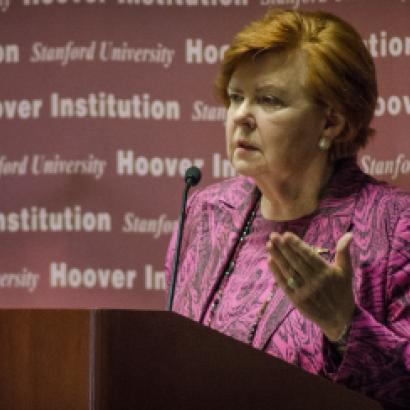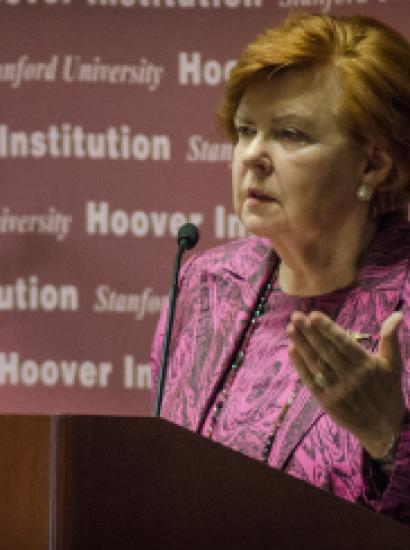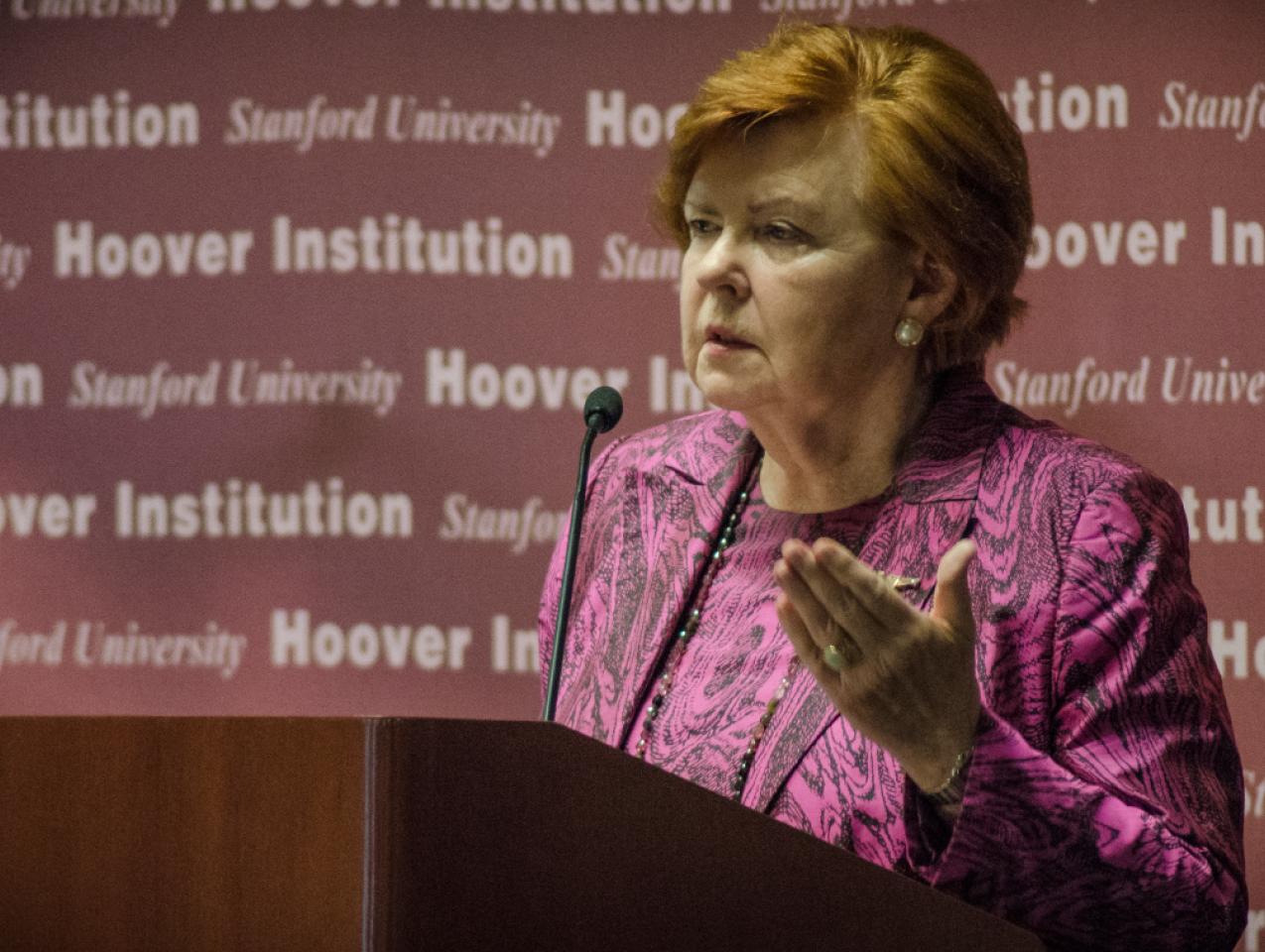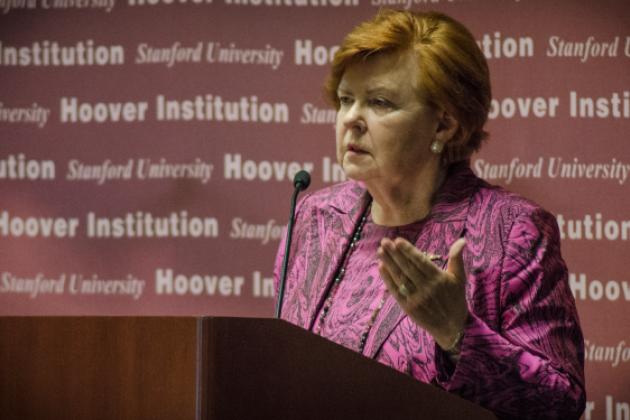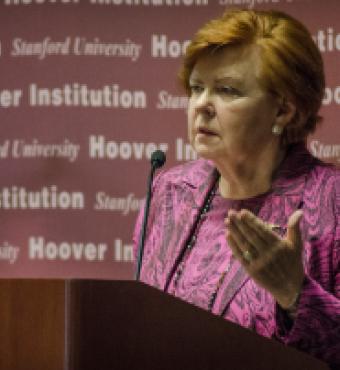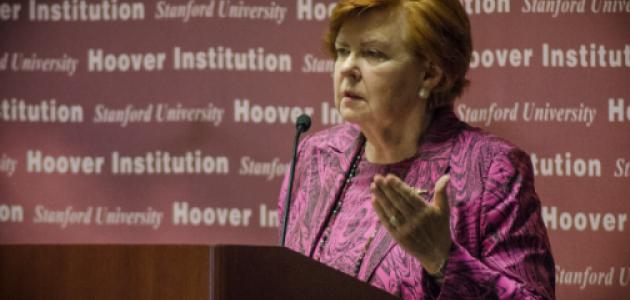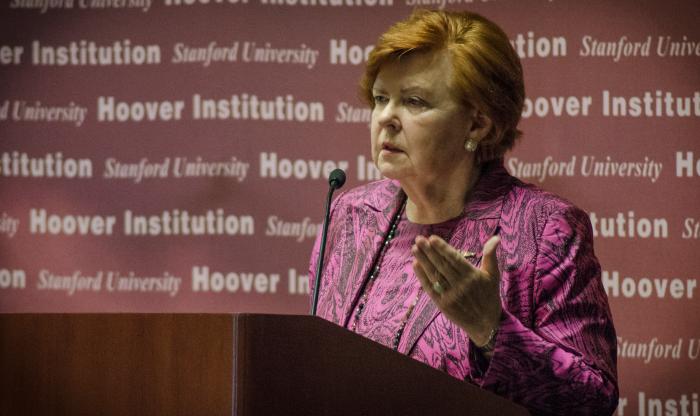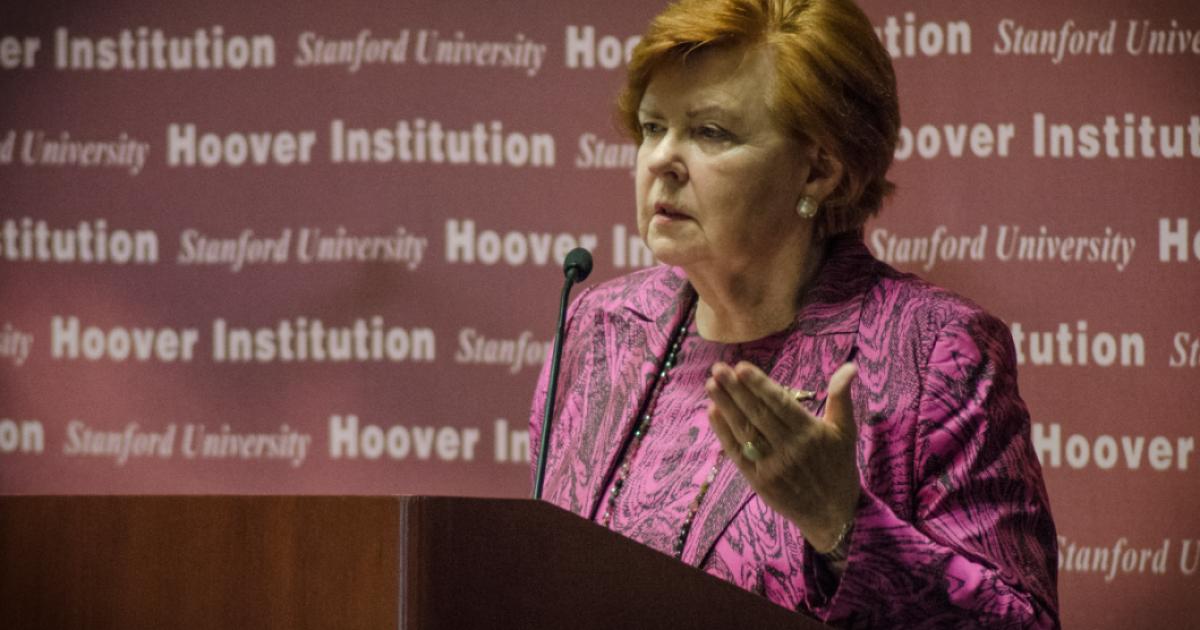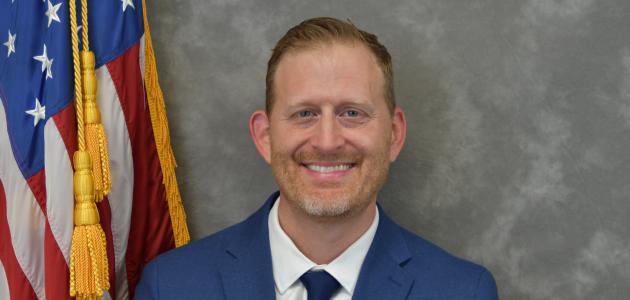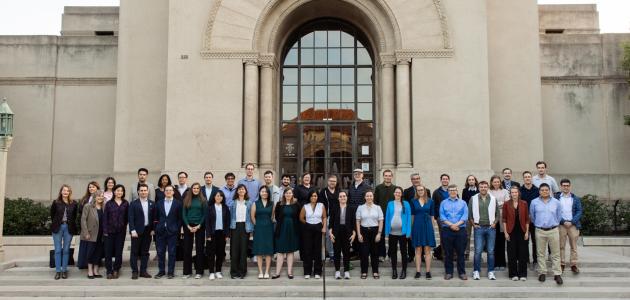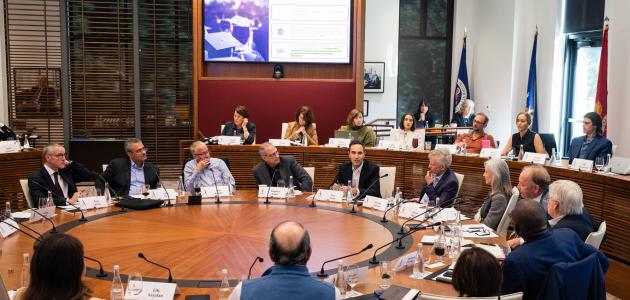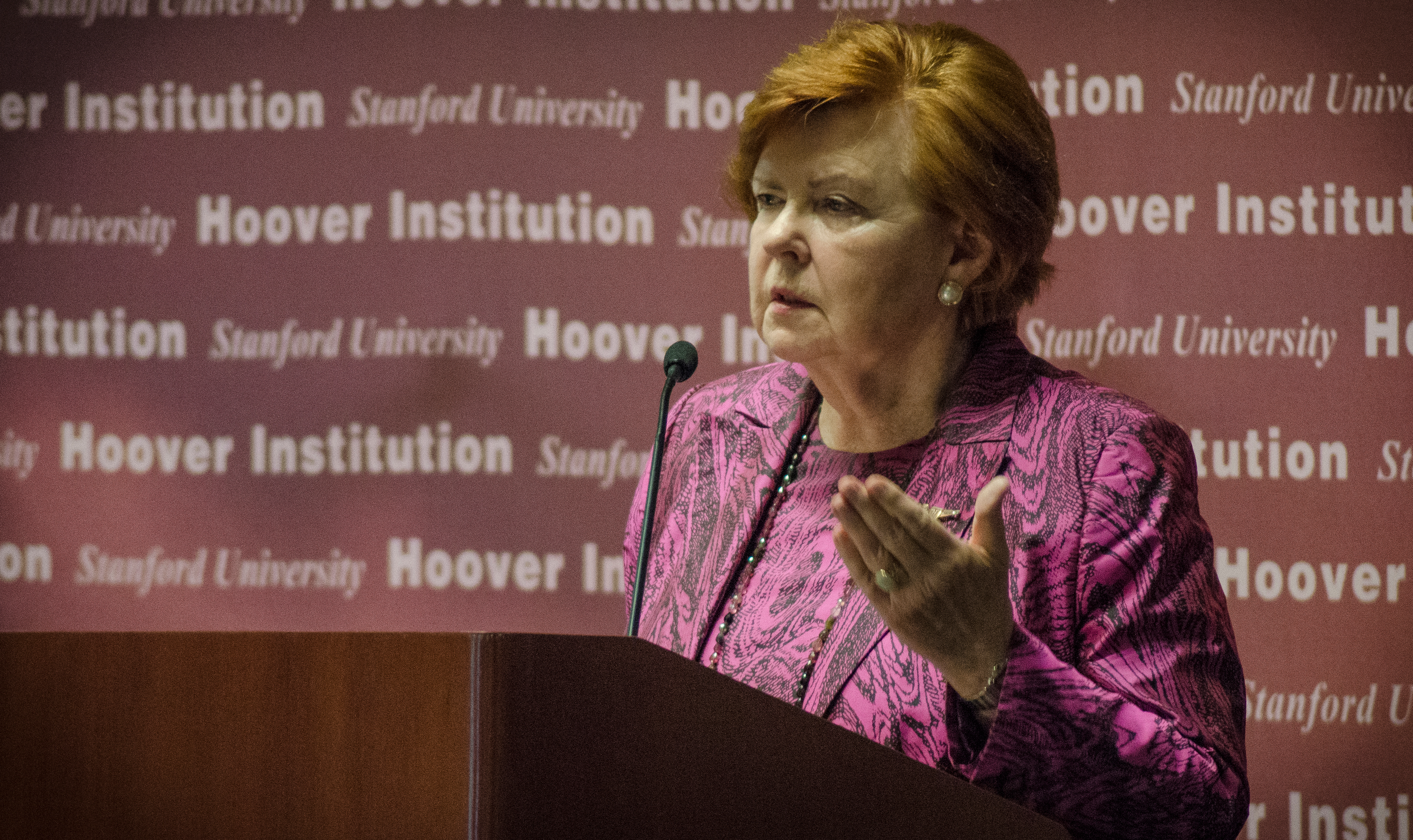
On Wednesday, October 8, former Latvian president Vaira Vīķe-Freiberga gave the keynote address at the "War, Revolution and Freedom: The Baltic Countries in the 20th Century" conference sponsored by the Hoover Institution Library & Archives and Stanford University. Speaking to a packed audience in Stauffer Auditorium, Vīķe-Freiberga spoke about the recent history of Latvia, Estonia, and Lithuania, all of which became independent countries again in 1991 after nearly fifty years of Soviet rule.
Vīķe-Freiberga's talk was titled "Against All Odds: The Path of the Baltic States to the EU and NATO" in which she discussed the enormous strides made by the Baltic States in rejoining Europe and forging renewed ties with Western countries. Based on her personal experience as Latvian president between 1999 and 2004, Vīķe-Freiberga described that process as a path "strewn with obstacles." In their efforts to join the European Union and NATO, Latvia and the other Baltic States met resistance from some Western European countries. It was "ultimately a political decision," she said, that had to be made by Western countries as to whether the Baltic States would be admitted to the EU and NATO.
Vīķe-Freiberga emphasized that Latvia, Estonia, and Lithuania had all benefitted from EU and NATO membership, even though the economic crisis of recent years has been blamed on the EU by many in the Baltic States. But, she said, compared to countries that had not joined the EU or NATO, the Baltic States were in much better economic and political shape and had achieved greater military security.
After her talk,Vīķe-Freiberga took questions from the audience. Her answers were highly critical of recent Russian actions in Ukraine and decried Western leaders’ weakening resolve to face up to the implications of those actions. In her concluding remarks, Vīķe-Freiberga singled out the Hoover Institution Library & Archives for their role in preserving documents that allow historians to "do the work that history is meant to do" in establishing the truth about past events.




